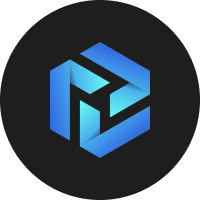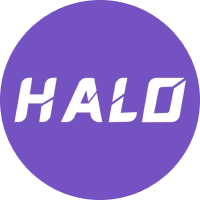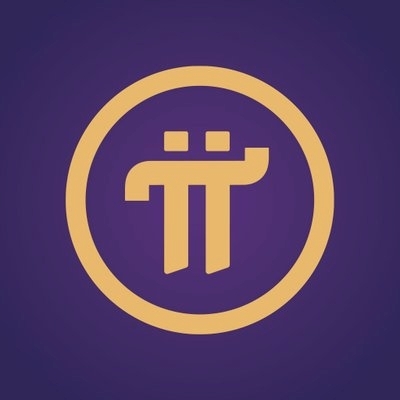What is DeFAI (Decentralized Finance Artificial Intelligence)?
Original Title: "What Is DeFAI (Decentralized Finance Artificial Intelligence)?"
Original Author: Sankrit K
Compiled by: Scof, ChainCatcher
Key Points:
Since the advent of artificial intelligence agents, "crypto" and "AI" have become buzzwords and headlines for everyone. Together with blockchain technology, they form an innovative triad that could shape the technological landscape of this decade.
Mark Zuckerberg predicts that there will be more AI agents than humans in the future. Blockchain is the ideal environment for these AI agents to thrive—permissionless, trustless, tamper-proof, and transparent.
DeFAI—the fusion of decentralized finance and artificial intelligence—is a new crypto narrative that uses AI to bridge the accessibility gap in decentralized finance (DeFi).
This article will explore the narrative of DeFAI in detail and outline some popular projects innovating in this niche.
DeFAI (Decentralized Finance + Artificial Intelligence) is a way to integrate artificial intelligence (AI) into decentralized finance (DeFi) systems, aiming to enhance efficiency, accessibility, and user experience.
DeFi is a paradigm that fundamentally rethinks how financial systems and investment tools operate. It is entirely trustless and free of intermediaries; this is nearly impossible to achieve in most traditional financial scenarios.
However, one drawback of DeFi is that its technical complexity is overwhelming for the average user, and the learning curve is steep.
For many, the empowerment promised by DeFi is often overshadowed by the challenges of managing risks, interpreting complex data, and staying ahead in a 24/7 market. Users often find themselves confused: how can they fully leverage the potential of DeFi without getting lost in its complexities?
On the other hand, artificial intelligence (AI) has already demonstrated significant potential in simplifying decision-making and optimizing processes across various industries.
Thus, the overarching goal of DeFAI is to apply AI-based solutions to DeFi projects, abstracting technical details to make on-chain interactions more user-friendly for non-technical users.
DeFAI can provide real-time insights, automate trading, personalize strategies, and facilitate efficient decision-making, all without requiring users to bear the burden of technical details.
A common feature of current DeFAI-based applications is that users can perform complex DeFi operations through simple, human-like commands without deep technical knowledge.
In the narrative of crypto and artificial intelligence, several categories have emerged. Due to their similarities, most people struggle to distinguish between them. The differences often lie in subtle nuances that only become apparent upon closer examination.
AI Meme coins typically rely on hype without substantial functionality; crypto AI agent projects usually target specific use cases; whereas DeFAI takes an approach that makes the on-chain financial ecosystem more accessible to the masses.
The table below can help you better understand these differences.
At first glance, DeFAI and intent-centric blockchains or projects may seem similar, as they both focus on improving user experience and system efficiency.
However, upon deeper analysis, DeFAI and intent-based architectures are fundamentally different. They differ in design philosophy, implementation methods, and the scope of problems they address.
On the surface, both DeFAI and intent-centric blockchains aim to simplify user experience and enhance the efficiency of the blockchain ecosystem. They both attempt to abstract the complexity of on-chain interactions, allowing users to focus on desired outcomes rather than intricate technical details.
But the similarities end there.
Currently, DeFAI primarily uses machine learning algorithms and large language models to simplify interactions between humans and blockchains. On the other hand, intent-centric blockchains focus on the concept of "intent," where users express their expected outcomes, and the system typically employs a "solver" to find the best path to achieve that goal.
You can think of the solver as a specialized module in an intent-centric blockchain that translates user intents into executable on-chain actions. For example, if a user wants to swap tokens or transfer assets across chains, the solver determines the optimal path based on factors like gas fees, slippage, and liquidity, and executes the corresponding transaction.
DeFAI, however, addresses the problem differently. It does not focus on the infrastructure needed to execute intents but rather leverages AI to help users make better decisions before execution. The AI models in DeFAI analyze on-chain data, predict market trends, and recommend actions based on user goals (e.g., selecting the best liquidity pool to provide liquidity or optimizing asset allocation for yield farming).
It is important to emphasize that when considering the recommendations of DeFAI agents, users still need to conduct their own research.
Let's take token swapping as an example to see how each approach handles it.
Intent: Cross-chain token swap
DeFAI would use AI algorithms to provide real-time suggestions for the user:
Step 1: The user inputs, "I want to swap 1 ETH for USDC."
Step 2: DeFAI analyzes on-chain data, including DEX prices, liquidity pools, gas fees, and bridging costs.
Step 3: It suggests the best route, such as swapping ETH for USDC on Uniswap via Ethereum and then bridging USDC to Polygon to reduce gas fees.
Step 4: The user executes the suggested transaction through a semi-manual method or via the connected wallet interface.
Here, DeFAI acts as a smart assistant, helping the user make informed decisions while leaving the final execution control to the user.
Intent-centric blockchain, the process is more automated:
Step 1: The user inputs, "Swap 1 ETH for USDC."
Step 2: The system captures the intent and passes it to the solver.
Step 3: The solver determines the best path, which may involve splitting the transaction across multiple DEXs, utilizing Rollup to reduce costs, or combining the swap and bridging into a single operation.
Step 4: The blockchain executes the transaction on behalf of the user, sending USDC to their wallet without further input.
Here, the user interacts only at the intent level.
AI excels at learning from input data (training sets) and generating tailored outputs. If this data includes your trading history, investment patterns, and risk tolerance, DeFAI applications can create highly personalized financial strategies.
For example, suppose an AI-driven DeFi application analyzes your on-chain activity and finds that you frequently interact with stablecoins. Based on this, it might recommend high-yield stablecoin staking platforms.
Projects like Mozaic Finance are already working in this direction, helping users dynamically allocate funds to maximize returns and manage risks.
Staking is a popular (and mostly safe) way to earn guaranteed returns by staking assets. However, these returns are only guaranteed if the validator you delegate to is honest and performs well. Choosing the wrong validator can lead to reduced rewards or, in some cases, penalties like "slashing."
Selecting one from numerous validators is a challenging task, and naturally, this is a problem that can be handed over to AI.
DeFAI applications like HeyElsa can analyze multiple validators upon request, assessing important metrics such as uptime and reputation. For example, if a user asks HeyElsa to stake their assets, the system intelligently compares validators and selects the one that best matches the user's preferences.
With thousands of tokens on each blockchain, tracking investments has become increasingly complex for retail crypto investors. Brief trends, meme tokens, and airdrops often lead to over-diversified portfolios, making asset management difficult.
DeFAI addresses this issue by introducing natural language portfolio management, allowing users to interact with their portfolios as easily as sending messages.
Imagine you simply indicate your needs to the application—like "Show me the best-performing tokens this month" or "How many assets in my wallet are worth less than $1"—and the application outputs easy-to-understand, accurate results.
Platforms like HeyElsa and Griffain have achieved this functionality by combining AI and blockchain. They can interpret user commands, analyze on-chain portfolios, and execute requests on DeFi protocols in a chat-like interface.
Similarly, SoDAS (Solana DeFi Agent Swarm) integrates messaging platforms like Telegram and Discord, enabling users to manage their portfolios through conversational interactions.
Trading cryptocurrencies requires a strong mindset. Even if your strategy is well thought out, emotions often take over when it comes time to act—this is a common issue for most investors.
Watching momentary price fluctuations can often lead to impulsive decisions. DeFAI applications can largely eliminate emotional biases by automating trading strategies around specific goals, or even completely remove them.
Platforms like Loomix on LogX are leading the way in this area. Users can define specific financial goals, such as "Sell 50% of my ETH if the price drops below $3500 to minimize losses, or sell at $4000 to lock in profits," and then Loomix's AI algorithms will automatically execute these strategies.
Another example is Aspis, which offers AI-driven liquidity pools customized according to specific financial goals. For instance, you can instruct the system to allocate funds for a 20% return while setting a 5% risk cap. The AI agents within Aspis dynamically adjust these strategies to adapt to market fluctuations and optimize performance in real-time.
Here is a list of 8 DeFAI projects (in no particular order), along with brief descriptions and some of their key features.
DeFi + AI redefines the relationship between autonomy and automation. Unlike intent-centric protocols that prioritize outcome-driven automation, DeFAI retains human decision-making power by acting as a smart advisor rather than an executor.
The most challenging implication of DeFAI lies in its potential to humanize blockchain.
DeFAI has the potential to catalyze a new era where blockchain transcends its traditional niches by embedding intelligence into its infrastructure. The ultimate test will be whether DeFAI can scale without sacrificing the core principles of decentralization, a challenge that requires resilience in terms of the transparency of AI training, accountability of recommendations, and resistance to algorithmic monoculture.
While DeFAI can provide users with a more efficient and convenient way to engage with decentralized finance, always ensure to conduct thorough research before investing any capital.
We Asked DeepSeek to Predict Bitcoin Prices and It’s Very Bullish
First, we exchanged greetings and pleasantries, as it was our first login with DeepSeek. Then we asked, “DS, do you know what Bitcoin is?”
The large language model was clearly familiar with the world’s leading cryptocurrency by market cap.
DeepSeek Tells Us Its Bitcoin Price Outlook
“Yes, I do!” DeepSeek answered. “Bitcoin is a decentralized digital currency, often referred to as a cryptocurrency. It was invented in 2008 by an unknown person or group of people using the pseudonym Satoshi Nakamoto and released as open-source software in 2009.”
The new chatbot gave a one or two-sentence summary of seven key points about Bitcoin. It listed these as Decentralization, Blockchain Technology, Mining, Limited Supply, Security, Volatility, and Use Cases.
After that, DeepSeek helpfully prompted, “If you have any specific questions about Bitcoin or need further details, feel free to ask!”
“DS, do you have an outlook on Bitcoin prices in 2025?” we asked.
First, DeepSeek qualified that “Predicting the price of Bitcoin (or any cryptocurrency) is highly speculative and subject to a wide range of factors, including market sentiment, regulatory developments, technological advancements, macroeconomic trends, and adoption rates.”
“While I can’t provide a definitive outlook for Bitcoin prices in 2025,” the chatbot told us, “I can share some perspectives and factors that analysts often consider when making predictions.”
Then, the platform shared what it sees as the relevant factors in Bitcoin’s price in 2025.
These were adoption and institutional interest, regulatory environment, macroeconomic conditions, technological developments, market cycles, and halving events.
AI Chatbot’s 2025 BTC Price Prediction: $500,000
After that we asked, “What is the highest price you think that Bitcoin could feasibly or realistically reach in 2025?”
DeepSeek said the “realistic high price estimate for 2025” for BTC is 200,000 to 500,000.
The bot cited analysts “who believe Bitcoin could see massive adoption and institutional investment, similar to gold’s market capitalization.”
The AI didn’t give any specific sources, but we recently reported on three.
The post We Asked DeepSeek to Predict Bitcoin Prices and It’s Very Bullish appeared first on CryptoPotato.


 Precio más bajo
Precio más bajo Precio más alto
Precio más alto 















































Datos sociales de FREEdom Coin
En las últimas 24 horas, la puntuación del sentimiento en redes sociales de FREEdom Coin fue 2.3, y el sentimiento en redes sociales en cuanto a la tendencia del precio de FREEdom Coin fue Bajista. La puntuación global de FREEdom Coin en redes sociales fue de 18,220, que se sitúa en el puesto 65 entre todas las criptomonedas.
Según LunarCrush, en las últimas 24 horas, se mencionó a las criptomonedas en redes sociales un total de 1,058,120 veces, y se mencionó al token FREEdom Coin con un ratio de frecuencia de 0.01%, lo que lo sitúa en el puesto entre todas las criptomonedas.
En las últimas 24 horas, hubo un total de 208 usuarios únicos debatiendo sobre FREEdom Coin y un total de 142 menciones sobre FREEdom Coin. Sin embargo, en comparación con el periodo de 24 horas anterior, el número de usuarios únicos Aumento del un 119%, y el número total de menciones Aumento del un 373%.
En Twitter, hubo un total de 4 tweets mencionando a FREEdom Coin en las últimas 24 horas. Entre ellos, el 0% son optimistas respecto a FREEdom Coin, el 75% son pesimistas respecto a FREEdom Coin y el 25% son neutrales respecto a FREEdom Coin.
En Reddit, hubo 4 publicaciones mencionando a FREEdom Coin en las últimas 24 horas. En comparación con el periodo de 24 horas anterior, el número de menciones Aumento del un 100%.
Panorama social completo
2.3